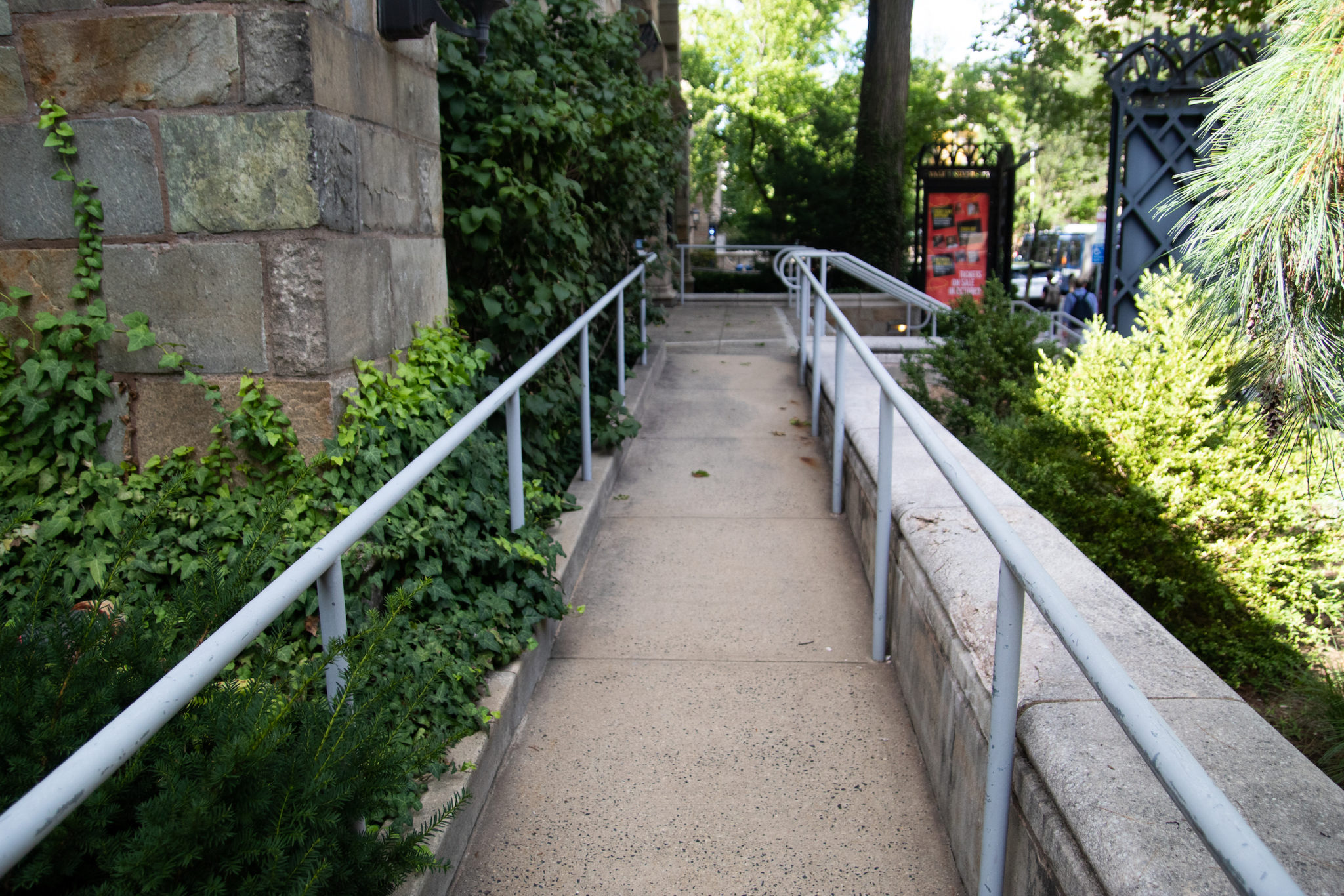University revamps harassment policies, accessibility services
University administrators announce new developments for addressing discrimination, harassment and accessibility.

Zoe Berg, Photo Editor
Last month, University administrators announced, via a campus-wide email, myriad changes and new initiatives for addressing discrimination, harassment and accessibility on campus.
New developments include a consolidated policy against discrimination and harassment, more language surrounding informal resolution and investigation processes, an online reporting form for incidents that may occur and more. The changes and initiatives come after a 2019 external review and report on Yale’s responses and resources regarding racial discrimination and harassment and a 2020 report from the President’s Committee on Diversity, Inclusion and Belonging. Advancements related to accessibility were also highlighted in the school-wide email, such as a new website and additional staff in Student Accessibility Services.
“Yale’s mission is advanced by fostering an environment of diversity, equity, inclusion and belonging, so that each one of us can participate freely and fully in the pursuit of excellence that defines our community,” read the Aug. 2 email from the Office of the Secretary & Vice President for University Life, which is headed by Kimberly Goff-Crews ’83 LAW ’86. “As part of the ongoing and wide-ranging efforts around Belonging at Yale, we have reviewed existing policies, reporting processes, resources, and staff that support the work of preventing and addressing concerns of discrimination and harassment. We also assessed how the university’s resources for accessibility were communicated.”
Progress towards discrimination and harassment
In April, the News reported on the efficiency of two primary University systems — the Office of Instiutional Equity and Accessibility, and Discrimination and Harassment Resource Coordinators, formerly called Deans’ Designees. Some students and former employees criticized a lack of awareness and transparency pertaining to those resources, saying that monthslong OIEA investigations often ended with unsatisfactory outcomes.
Per the Aug. 2 email, the University has updated and clarified information on the OIEA’s role and procedures. The office’s website now outlines a process that includes an initial discussion with an OIEA staff member, pointing towards resources related to the inquiry and possible resolution without the need of an investigation. In the case that further investigation is warranted, the OIEA has listed steps such as interviewing parties or witnesses and discussing findings and recommendations with “appropriate individuals and offices.”
Additionally, the OIEA has hired Diane Cornelius Charles, who joined staff as the Associate Director in July. In an email to the News, Elizabeth Conklin — associate vice president for institutional equity, accessibility, and belonging — wrote that there is an active search and hiring process for an Equity and Access Representative for the OIEA.
Conklin added that the Aug. 2 email was also sent to incoming students, with many discrimination and harassment resource coordinators presenting information during University preorientation programs this fall.
“We are committed to ongoing awareness activities for students, staff, and faculty regarding the policy and resources,” Conklin wrote in an email to the News.
Progress towards accessibility
The unveiling of changes and further policies regarding discrimination and harassment coincided with the launch of a new website that consolidates accessibility resources for Yale community members.
Around March, Joaquín Lara Midkiff ’23 served on the working group to vet a centralized and more robust display of resources related to accessibility on campus.
Midkiff, who serves as the president of the Disability Empowerment for Yale group, described “several conversations” and “long meetings” with Yale IT staff where he and others gave feedback about the website’s beginning stages. Once launched, Midkiff called it a “pretty remarkable” resource for students, graduates, staff and visitors.
“One of the amazing things is the ticketing system, anyone can report a menagerie of accessibility concerns,” Midkiff told the News. “If I’m in my residential college and my lift won’t work to get to the dining hall in a wheelchair, I can go to one site, give my claim and it’s sent to the right facilities people.”
The website features a form for community members to report a disability-related accessibility barrier and also lists information regarding campus access, accommodations and affinity groups.
In her email to the News, Conklin noted the four new SAS staff members and expressed excitement about the office’s expansion, which she said would enable the University to continue facilitating individualized accommodations for students with disabilities and working to remove barriers.
While Midkiff, who has advocated for increased SAS staff in the past, said the office’s expansion was “on the right path”, the future of accessibility at Yale for him meant the expansion of community spaces.
“There’s this whole other dimension [of] disability as a community and identity,” Midkiff said. “Highlighting and investing in future success as a community of people, advocating for a persons with disabilities cultural center … if the University is really interested in growing that, they should invest in community building spaces.”
The Disability Empowerment for Yale group was founded in 2016.









